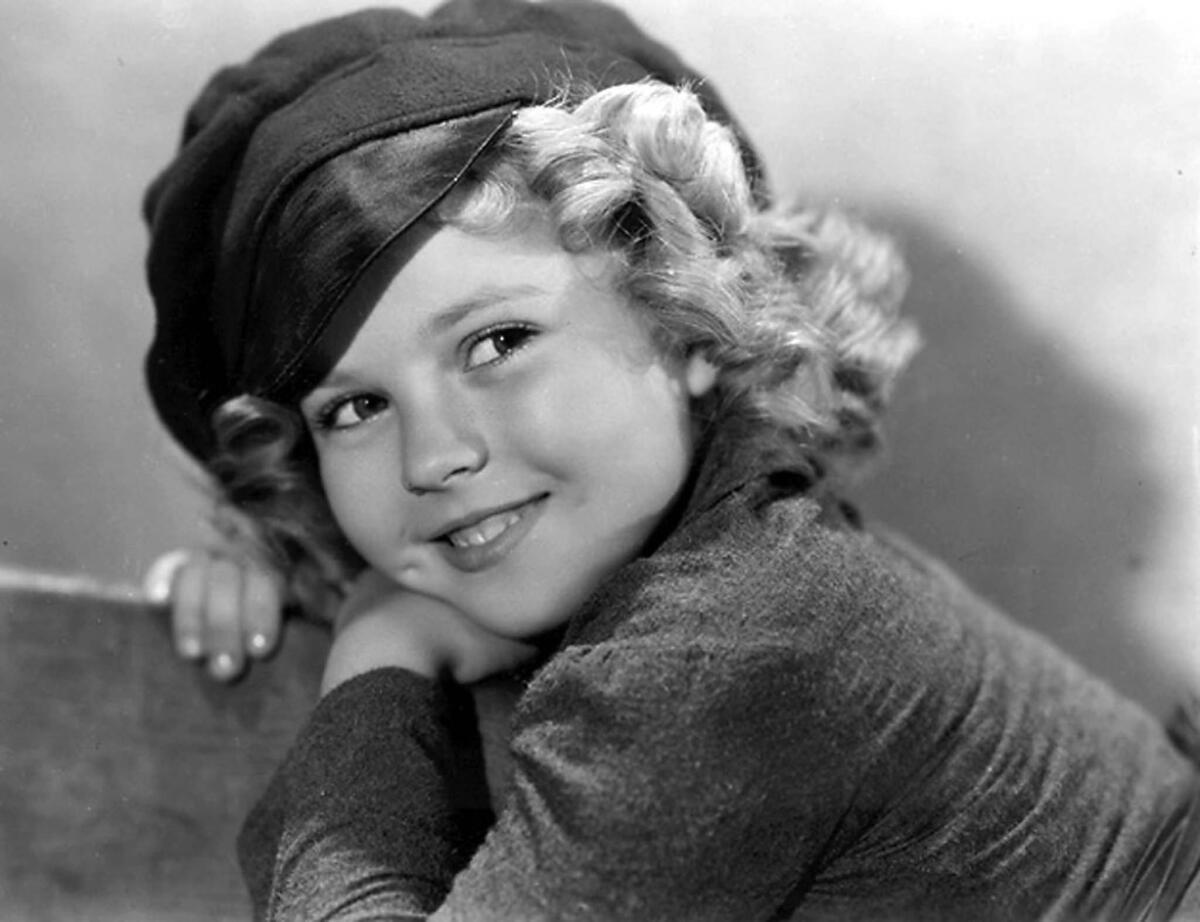Critic’s Pick: TV picks: Shirley Temple month on Turner Classic Movies

The films of 20th century child star Shirley Temple will be shown Mondays through July on Turner Classic Movies.
Shirley Temple month on Turner Classic Movies (TCM, Mondays in July). Shirley Temple, that compact package of exuberant goodness, talent and dimpled indomitability, who brought light and love into the Great Depression, dominates Mondays this month on TCM, a human picnic for the American July.
Hollywood’s top draw from 1935 to 1938, Temple was not the only singing and dancing child actor of her generation but certainly was the most talented, the most dynamic, undeniable and preternaturally natural, artificial ringlets notwithstanding. (Judy Garland, who was older but whose film career began later, was already a teenager when she signed to MGM.)
Temple was colossal, she was stupendous, she was an industry unto herself. The right talent at the right time, she may have given rise to a nation of hopeful amateur imitators, but then, as now, has proved irreplicable — unimaginable almost, in an age in which the culture sexualizes everything north of infancy.
Temple was often the smartest character in the scene, but she was also only ever a kid. She was a poor girl among the rich, or a rich girl among the poor. She was usually fatherless, motherless or an orphan, even as she seemed somehow too self-possessed to really need anyone other than to dance with. (Even in 1934, her pictures were old-fashioned.)
It’s true that Temple films are, for the most part, cinematically undistinguished, but they are easy to read and did their work in their day and beyond, becoming a staple of pre-cable television — which is to say that children of the 1950s and ‘60s and ‘70s (and for all I know ‘80s) grew up on them as well. They were just around.
Unlike Garland or Natalie Wood or Elizabeth Taylor or other famous young people of Old Hollywood whose adult careers would eclipse their earlier ones, Temple never successfully moved into grown-up roles, despite charming work in “The Bachelor and the Bobby Soxer,” opposite Cary Grant, and in John Ford’s “Fort Apache” with John Wayne and Henry Fonda; indeed, she retired from pictures at 21.
The Turner festival, which takes in nearly the whole range of Temple’s film career, proceeds more or less chronologically, which means that it starts near the top, with Monday’s showings of “Little Miss Marker” (1934), based on the Damon Runyon story; “Now and Forever” (1934), with Gary Cooper and Carole Lombard; “Bright Eyes” (1934), the first picture specifically crafted for her, and the source of “On the Good Ship Lollipop”; “Curly Top,” home of “Animal Crackers in My Soup”; and “Poor Little Rich Girl” (1936), which teams her with Jack Haley.
Temple also would dance with Buddy Ebsen — whom Haley replaced as the Tin Man in “The Wizard of Oz,” a film for which she was briefly mooted — and in “Captain January,” which is not on this program. Also missing, notably (one might say wisely) are Temple’s “Confederate films” — “The Littlest Rebel,” “The Little Colonel” — but her dances with Bill Robinson, her most famous partner, are on the Internet whenever you want to see them, happily extracted from their context.
Robert Lloyd tweets in 3/4 time @LATimesTVLloyd
More to Read
The complete guide to home viewing
Get Screen Gab for everything about the TV shows and streaming movies everyone’s talking about.
You may occasionally receive promotional content from the Los Angeles Times.






